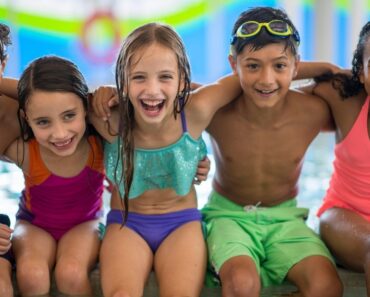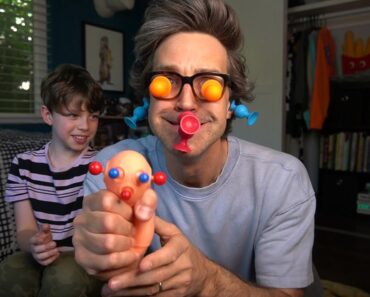We’re so used to stay-at-home orders, lax schedules, no activities, and nowhere to be, that when things open up again, it’s going to be weird—especially for our kids.
Are your kids refusing to sign up for their usual sports teams, group activities or day camps, even if restrictions soon lift and they’re deemed safe again this summer? It’s distressing when our children announce they’d rather stay home and play Roblox than meet up at the park for a masked playdate with buddies. On the one hand, it’s great that so many kids have adapted and settled into being at home so much–we’re all trying to see the positives of a situation we cannot control. On the other hand, parents may be wondering if their children have become permanent homebodies with no desire to see the outside world. Many of us have had kids in remote school indefinitely, or switching back and forth all year, and all of our social skills are atrophying. After so much time at home, it’s distressing to picture what it will feel like when we ease back into some version of a normal life again.
In my practice as a parenting coach, I’ve also heard from some families that their kids are already anxious about returning to in-person school next September.
First of all, rest assured that this is to be expected, and from my expertise as a parenting coach, our kids definitely aren’t “broken.” We all adjusted to the new COVID normal: lots of time at home. That’s what we do as humans—we adjust when we need to. But just because we can and do adjust, that doesn’t mean it’s easy. Transitions are always hard. (If you’ve had a child who refuses to get in the bathtub and then once they’re finally in, they refuse to get out, you know what I’m talking about.) We’ve gotten so used to stay-at-home orders, lax schedules, no activities, and nowhere to be. When we start opening up again, it’s going to be weird—especially for our kids.
Let’s look at the science behind it, too. Our brains are wired to prefer certainty and familiarity. This is why going out and seeing people again may be anxiety-inducing. Our amygdala (the part of our brain that keeps us safe) loves it when life is predictable and comfortable. When we feel we are in times of transition and unfamiliarity, our amygdala can take over and goes into high alert. This is why staying at home and playing video games can feel a whole lot “safer” than going back to our old activities and school routine. Our amygdalas hate a challenge, even if, logically, we know it’s for the better.
OK, so if we know that transitions are hard for kids at the best of times, and that our brains love the certainty of the known, what can we do to help our kids as they navigate this?
First, teach your kid how their brain works.
Explain to your kid that their amygdala can act like a smoke alarm that goes off when the toast burns. It might feel like an emergency, but they are actually safe. We can hear the messages coming from our amygdala: “Stay home! It’s nice and safe here!” and choose not to act on them. Those thoughts are like the “junk mail” of our brains. Observe the thoughts, recognize it’s a false alarm, and toss them out.
Normalize their reluctance.
We can say, “Of course you’re hesitant, and maybe even a little worried. This is a big change and we’ve been at home for so long. It’s totally normal to feel this way.” Knowing it’s normal to be afraid helps us to be brave.
Reassure children that whatever happens, we can handle it.
We’ve told kids for so long that it’s not safe to be out and close to people, but soon we’ll be telling them that certain activities are OK. It’s understandable that our children might be a bit worried. To help them feel less anxious, we need them to understand that no matter what happens, we can handle it. (“We can handle it” is the anti-anxiety rallying cry.)
Role play and practice.
If you have toddlers or young children, you can play with stuffies or action figures and act out some of the new scenarios. You should pretend to be the hesitant toy who is feeling resistant to the transition, and let your child be the hero who solves the problem. If you have older children, you can play “What will you do when…” or “What could you do if…” This helps their brains move from the abstract to the concrete and prepares them for actual situations.
Remind them how fun life was pre-COVID.
Get out some pictures, slide shows, or phone videos of all the fun things we used to do. Share memories of favourite experiences. Anxiety can make us forget the past and that we actually can handle new or challenging situations.
Make time for intentional connection.
When kids feel secure and connected, it’s easier for them to venture out into the big world. Remember the toddler at a playgroup who would alternate between “checking in” with a parent and exploring? They had to be sure their mom or dad was still there before they could venture out on their own. What I call “Daily Special Time”—15 minutes a day of one-on-one time spent immersed in your child’s world of play, whatever it is—really helps kids feel more connected. It’s hard when you’re distracted by work and household responsibilities that need to be managed, too, but zeroing in on your kid for a very focused, undivided period of time will help. For this undivided 15 minutes, avoid screens and structured things like board games. Walk the dog together, ask your kid to play their fave songs for you, or shoot some hoops. This kind of connection also helps ease the ordinary daily transitions, like getting ready for bed or getting out the door in the morning. These transitions are often tough because we, as adults, are busy getting ourselves or other children ready. But if we can stop to play with them at their level for even just five focussed minutes, it can help.
Be a strong and enthusiastic leader.
Look for things to do as a family that involve getting back out into the world again, together. Start small—maybe it’s just going for a jog or a bike ride together. If your local library has opened, look into family-friendly programming. Maybe there’s a pottery studio with classes for adults and kids. When you sign up for some of the things your children used to love doing, make an extra effort to enroll them with a friend or two. Be positive but firm, and convey that participating in activities or interests is not negotiable. “You are going to Circus Camp with Maddie and Lily this summer!” Take electronics off the activity menu. (The choices aren’t “stay home and play Fortnite or go to soccer; the choices are go to soccer or stay home and be bored.)
Get laughing!
Our bodies create stress chemicals and hormones when we feel anxious. These are useful if we have to actually mobilize for a fight or flee from a predator. But if we don’t find a way to shed these chemicals, they can build up and make us feel even more anxious. Laughter flushes the stress chemicals from our bodies, reduces anxiety and eases tension. Silly kitchen dance parties, encouraging at home-pranks (kids love whoopee cushions), keeping a few joke books around the house, and physical activity like daily roughhousing sessions with your children can release tension and get everyone laughing. (And by the way, roughhousing doesn’t actually have to be rough—it’s anything silly that gets them giggling.)
Above all else, take a deep breath and give yourself some love. The pandemic has been hard on the children—and their parents. For over a year, we’ve been trying to juggle work and home while adapting to our kids’ moods, big feelings, and ever-changing needs. But with time, we will adapt to life after COVID, as well.
Sarah Rosensweet is a certified peaceful parenting coach, speaker, and parenting advice columnist. She lives in Toronto with her husband and three big kids (ages 13, 16, and 19). You can read more from her at sarahrosensweet.com.
![314: [Part 1] 4 Tips for Raising Happy, Emotionally Healthy Children by Sandra Cooper with… 314: [Part 1] 4 Tips for Raising Happy, Emotionally Healthy Children by Sandra Cooper with…](https://usparenting.com/wp-content/uploads/2020/12/1607656332_maxresdefault-370x297.jpg)
































